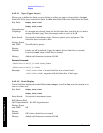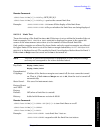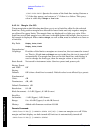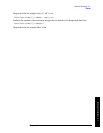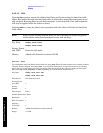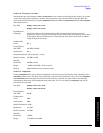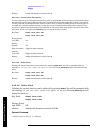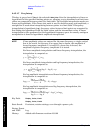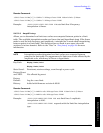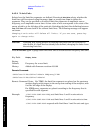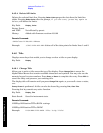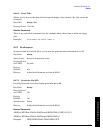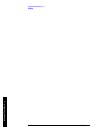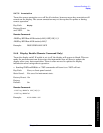
118 Chapter2
Instrument Functions: A - L
Display
Instrument Functions: A - L
2.4.5.1.7 Freq Interp
This key is greyed out if
Time is the selected XAxisUnits. Sets the interpolation to linear or
logarithmic for the specified limiting points set, allowing you to determine how limit trace
values are computed between points in a limit table. The available interpolation modes are
linear and logarithmic. If the linear (
Lin) mode is used for both frequency and amplitude, a
straight line is used when interpolating between points in a limit table. If frequency
interpolation is logarithmic (
Log), frequency values between limit points are computed by
first taking the logarithm of both the table values and the intermediate value. A linear
interpolation is then performed in this logarithmic frequency space. An exactly analogous
manipulation is done for logarithmic amplitude interpolation.
NOTE If two amplitude values are entered for the same frequency, a single vertical
line is the result. In this case, if an upper line is chosen, the amplitude of
lesser frequency (amplitude 1) is tested. If a lower line is chosen, the
amplitude of greater frequency (amplitude 2) is tested.
For linear amplitude interpolation and linear frequency interpolation, the
interpolation is computed as:
For linear amplitude interpolation and log frequency interpolation, the
interpolation is computed as:
For log amplitude interpolation and linear frequency interpolation, the
interpolation is computed as:
For log amplitude interpolation and log frequency interpolation, the
interpolation is computed as:
Key Path:
Display, Limits, Limit 1
Display
, Limits, Limit 2
State Saved: Persistent; retains settings, even through a power cycle.
Factory Preset
and *RST: Log
History: Added with firmware revision A.03.00
y
y
i1+
y
i
–
f
i1+
f
i
–
----------------------
ff
i
–()y
i
+=
y
y
i1+
y
i
–
log f
i1+
log f
i
–
---------------------------------------
log f log f
i
–()y
i
+=
log y
log y
i1+
log y
i
–
f
i1+
f
i
–
-----------------------------------------
ff
i
–()log y
i
+=
log y
log y
i1+
log y
i
–
log f
i1+
log f
i
–
-----------------------------------------
log f log f
i
–()ylog
i
+=



